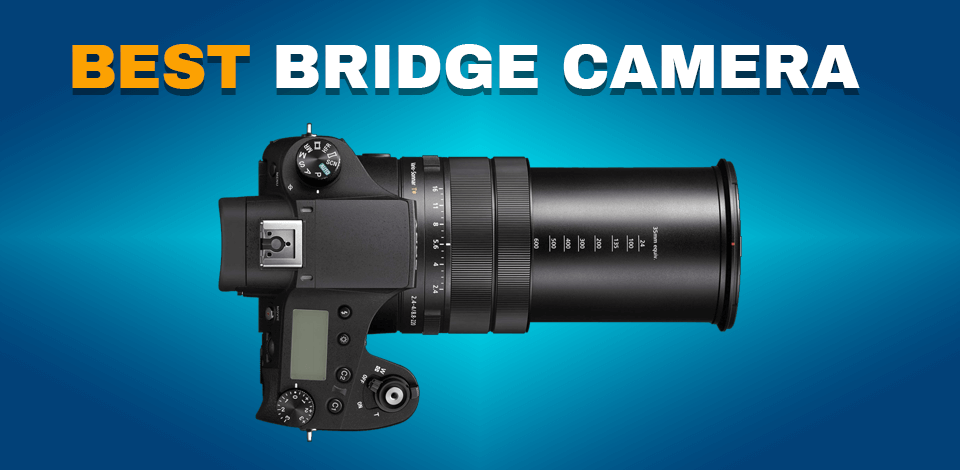
A bridge camera is the ultimate blend of simplicity and power. It is as easy to use as a compact camera but has the powerful zoom of a professional lens and the ergonomic design of a DSLR.
It is designed to feel familiar, almost like a DSLR, but with the added convenience of a built-in lens that often boasts an incredible zoom range - sometimes stretching up to 3000mm, a feature you won’t find in traditional camera setups.
For someone like me, who’s not a professional photographer, having a camera that’s both user-friendly and packed with advanced features is a game-changer.

Panasonic LUMIX FZ80D: ★★★★★ (5/5)
It’s definitely the best bridge camera of 2025, offering a powerful 60x optical zoom (20–1200mm), 4K, and amazing image stabilization perfect for handheld wildlife and travel shots.
The versatility of top bridge cameras above makes them ideal for snapping wildlife, fast-paced sports, or even the night sky, all without breaking the bank. Their incredible zoom range lets you switch effortlessly from sweeping landscapes to close-ups of distant subjects, like a bird perched far away.
With quick burst shooting and 4K video capabilities, these cameras excel at documenting family memories, travel experiences, or animals in wildlife. However, the amazing Zoom does have a few trade-offs to keep in mind.
Additionally, the combination of a smaller sensor and fixed lens makes it challenging to achieve the background blur often desired in portraits.
The bridge cameras, designed to "bridge" the gap between simple point-and-shoots and advanced DSLRs, may not be as trendy as they used to be, but they still offer a unique blend of features. With the FixThePhoto team we've rented and tested the most popular bridge cameras from 2023, 2024 and 2025 releases.
I’m a wildlife enthusiast and amateur photographer, planning an adventure to a well-known national park celebrated for its rich variety of birdlife and stunning natural scenery. Although I’m passionate about photography, I don’t have a high-end DSLR or mirrorless camera, and my phone just can’t capture distant animals or small details well enough.
Here are the features I looked for:
✔️ Superzoom lens: To capture distant wildlife and birds in high quality.
✔️ Lightweight and compact design: For moving around during hikes and long trips easily.
✔️ Built-in features: Image stabilization to prevent blurry photos when shooting handheld, and an electronic viewfinder (EVF) to help frame your shots even in bright sunlight.
✔️ Manual and auto modes: To help Alex experiment with settings as he learns photography while keeping reliable auto modes for simplicity.
✔️ 4K Video capability: For recording videos of wildlife in action or vast, scenic views.
The right bridge camera can help me strike a balance between quality, convenience, and cost, making sure I get breathtaking photos on my trip without the hassle of carrying bulky gear. With their vast experience in testing all kinds of cameras, the FixThePhoto specialists offered to help me find the perfect equipment.
| Feature | Bridge camera | DSLR | Point-and-shoot |
|---|---|---|---|
|
Zoom range
|
Massive built-in superzoom (up to 60x or 125x, e.g., Nikon P1000 for extreme wildlife distances)
|
Limited to lens selection (requires purchasing expensive telephoto lenses)
|
Moderate zoom (typically 5x–15x), not enough for distant wildlife
|
|
Portability
|
Lightweight, all-in-one design (no need for extra lenses)
|
Heavy, especially with multiple lenses for versatility
|
Compact and portable, but doesn’t offer top-notch features for wildlife photography
|
|
Ease of use
|
Intuitive operation, with both auto and manual modes; ideal for learning wildlife photography
|
Steeper learning curve with manual settings and lens management
|
Fully automatic with limited manual control; not suitable for advanced wildlife techniques
|
|
Cost
|
Cheap all-in-one option ($400–$1,000)
|
Expensive due to the camera body + telephoto lens ($1,500–$3,000+)
|
Very affordable ($100–$400), but is not so functional for wildlife photography
|
|
Zoom lens versatility
|
Built-in zoom covers wide-angle to telephoto for wildlife and landscapes without changing lenses
|
Requires frequent lens changes depending on the subject (e.g., wide vs telephoto)
|
Fixed zoom lens, not so flexible for varied wildlife distances
|
|
Image stabilization
|
Built-in advanced stabilization for crisp handheld shots at long zooms
|
Relies on lens stabilization, which can add to cost and weight
|
Basic stabilization doesn’t work well at long zooms
|
|
Video capability
|
4K video with high zoom for recording wildlife from afar
|
4K video depends on model, but lenses for wildlife videography can be pricey
|
Limited video functionality, often lacking 4K and advanced stabilization
|
|
Battery life
|
Battery life could be longer, suitable for a day in the field
|
Longer battery life but bulkier to carry extra batteries
|
Short battery life, unsuitable for long-lasting wildlife sessions
|
|
Weather resistance
|
Some models are weather-sealed, suitable for bad weather conditions
|
Higher-end DSLRs are weather-sealed but require costly weatherproof lenses
|
Rarely weather-sealed, bad option for rugged wildlife environments
|
|
Autofocus performance
|
Quick and reliable AF, suitable for wildlife in motion (though not DSLR-level fast)
|
Best AF for fast-moving wildlife, but heavily lens-dependent
|
Slower AF, poor performance with moving subjects like animals
|
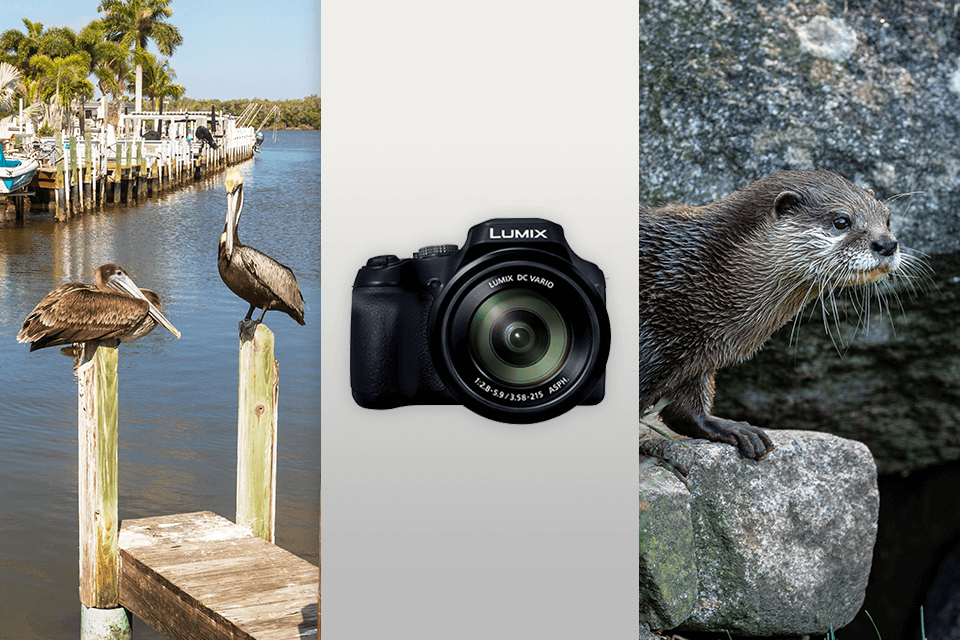
I brought this Panasonic camera on a weekend trip to a nature reserve, where I wanted to photograph birds, deer, and distant landscapes. The 60x optical zoom (20–1200mm) was a huge plus: I could zoom in on a bird high in a tree or a fox hiding in the bushes at a long distance. The image stabilization was key, keeping my shots clear and steady even at maximum zoom.
The battery lasted all day, and the touchscreen made changing settings quick and easy. However, it sometimes struggled to focus on moving subjects, which isn’t ideal for camera for wildlife photography. While the image quality isn’t as good as a DSLR, it’s still impressive for a budget-friendly bridge camera with a viewfinder.
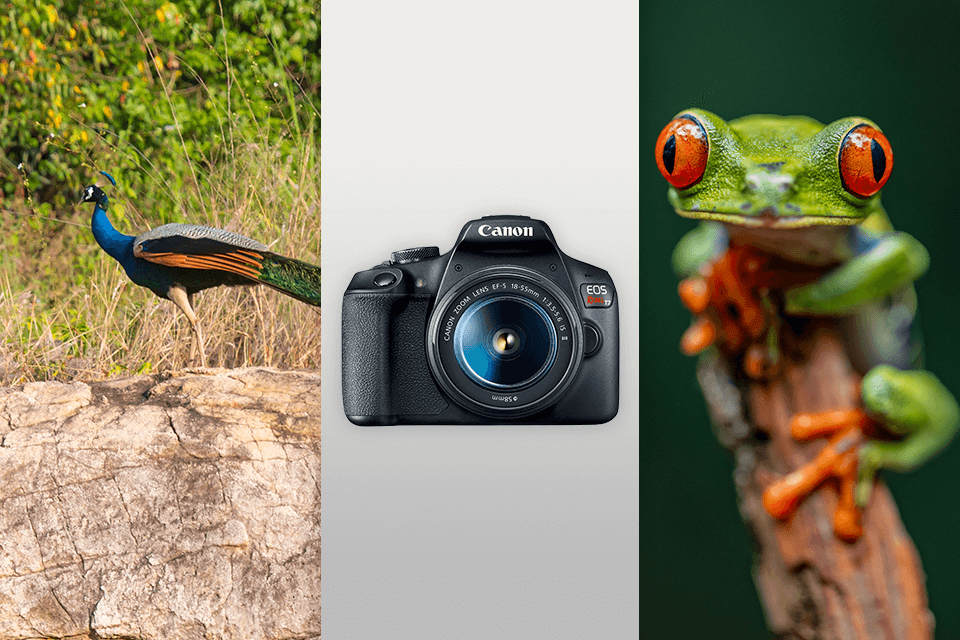
Testing this model was a joy. Its 24.1MP APS-C CMOS sensor and DIGIC 4+ image processor produced sharp, detailed photos of birds and distant animals. Even in low light, like early mornings, this Canon camera managed noise decently, but the pics could be sharper.
The included 18-55mm lens works well for close-up shots, but for wildlife, the 2.2x auxiliary telephoto lens was a game-changer. It’s not pro-level, but it did a great job bringing faraway subjects into focus.
At maximum zoom, the image quality wasn’t flawless, but considering its affordable cost, it was more than acceptable. The autofocus on this compact camera, worked well enough, though it could have been quicker and more precise, especially when it comes to tracking moving subjects.
Additionally, the included strap wasn’t the most comfortable for long shooting sessions, so I’d suggest upgrading to a better one if you plan to be out all day.
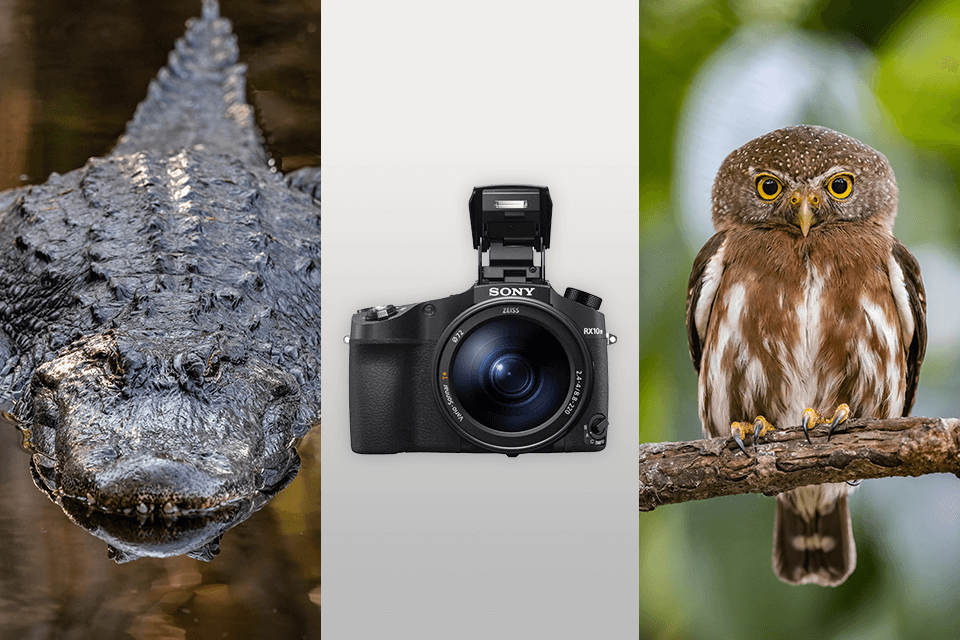
After testing this superzoom camera, Kate Debela concluded that its features are perfectly suited for wildlife photography, and she firmly believes it deserves the hype, and probably is worth paying such a high price. When I used it in the field, I was struck by how fast this Sony camera operates.
The 315-point autofocus system is impressively quick - this camera for photography claims a 0.03-second focus time, and I think it is really so.
I tried out this bridge camera while shooting a flock of flying birds, and its focus managed the task efficiently. Combined with its 24 fps burst shooting, I got sharp, detailed shots of birds in flight without any issues. For video, it records 4K at 30fps and Full HD at up to 960fps for slow-motion clips.
I filmed a deer jumping through a field in slow-mo, and it looked like a scene from a nature documentary. This also makes it a good camera for sports, where such effects are often needed.

Eva Williams, my colleague, recommended this digital bridge camera to me, and I was immediately impressed by its 52x optical zoom. I was able to get a close-up shot of a hawk sitting far away in a tree, which is something I never thought possible.
That said, I soon discovered that using the maximum zoom requires either a very steady hand or a tripod. While the optical image stabilization helps, it’s not perfect. My handheld photos often turned out blurry when fully zoomed in.
Thanks to 16MP CMOS, the images taken in a good light are decent. The colors were bright, and the details were ok, but to tell the truth, this isn’t on par with even an entry-level DSLR.
When I zoomed in on the photos later on my computer, I could see they weren’t as sharp as those from the highest megapixel cameras. The camera struggled in low light: photos of deer at dusk looked noisy and grainy, even after adjusting the settings.
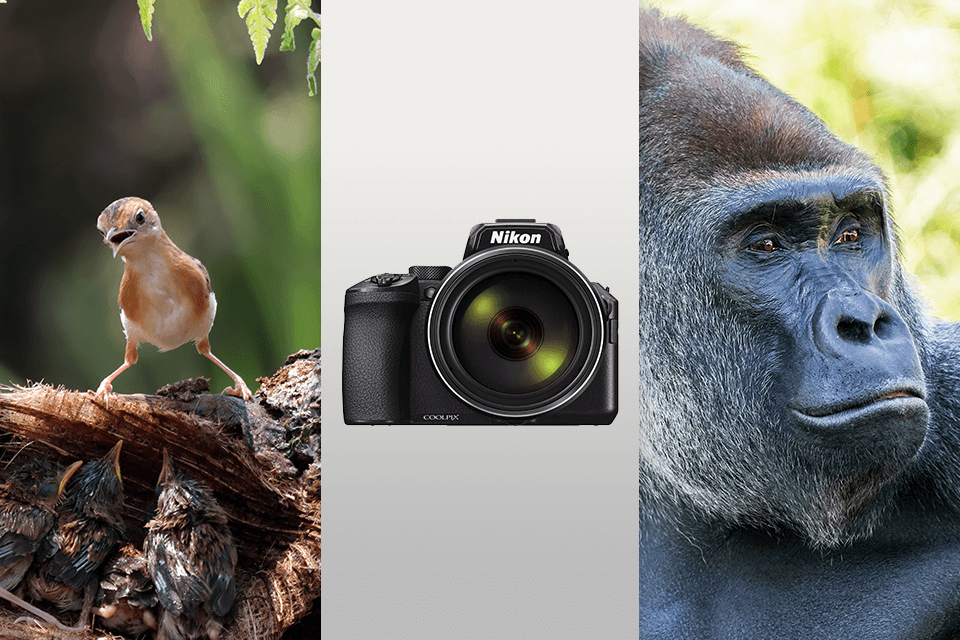
The P950 felt solid and well-built right from the start. While it’s not the lightest camera, the weight is justified by its incredible 83x zoom range, stretching from 24mm wide-angle to an astounding 2000mm telephoto. I took it directly to my favorite nature reserve to see how it handles real-world wildlife photography.
The zoom range was the first thing that amazed me. At 24mm, I took beautiful wide shots of landscapes, but zooming to 2000mm let me see tiny details, like the feathers of a heron far in the distance. It’s wild how close you can get without moving!
And if 2000mm isn’t enough (yes, that happens!), the digital zoom boosts it to 4000mm. But honestly, it’s more of a fun trick – the image quality drops a lot after the optical zoom, so this isn’t the best camera for macro photography.
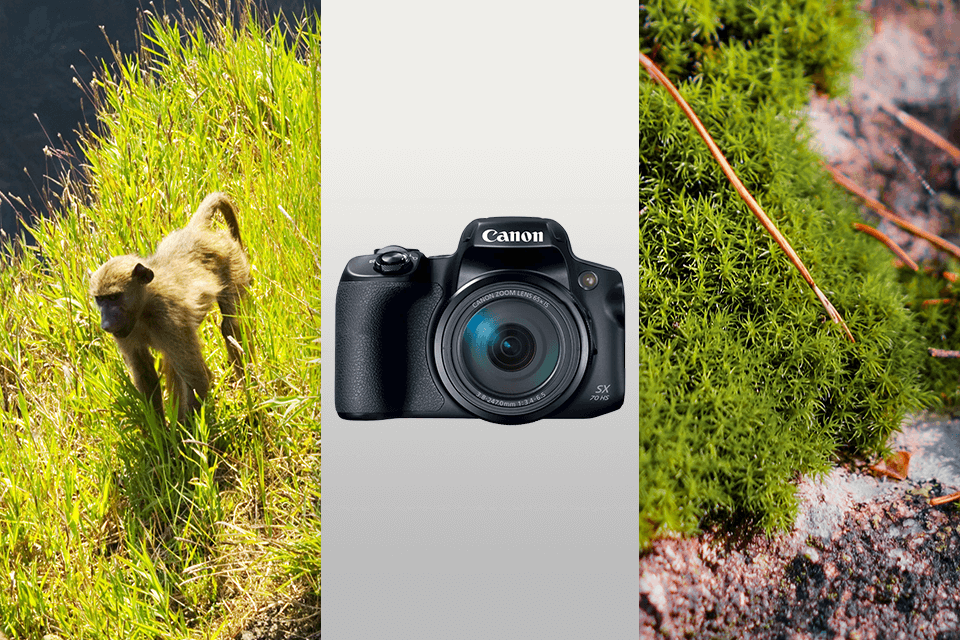
Canon PowerShot SX70 is a great example of a travel camera for long distances, offering a 65x optical zoom which is perfect for anything from landscape photography to close-up animal photos. It comes with an automatic mode and a user-friendly interface, making it a good choice for beginners like me.
Canon PowerShot SX70 is in the list of the best 4K bridge cameras as, according to my FixThePhoto colleagues, offers a relatively high megapixel count compared to other digital compacts, allowing for more precision and control in your shots. This cheap Canon camera also has image stabilization for shooting excellent low-light and nighttime photos.
However, one of the downsides of using this Canon bridge camera is that it doesn't usually have very good depth-of-field capabilities, making it difficult to achieve the 'bokeh' effect. This is particularly true when taking pictures at the very long end of the zoom range.
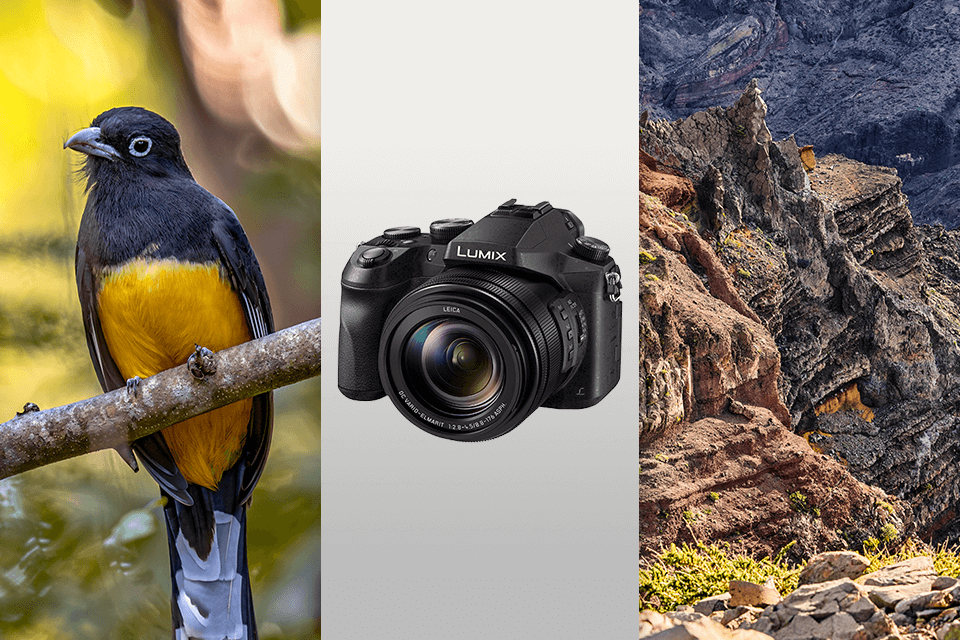
Vadym Antypenko chose this camera for its 20x zoom, which works well for general wildlife photography, even though it can’t compete with the impressive zoom of cameras like the Nikon P950. However, the compact camera has a serious upside: its 1-inch sensor delivers much better image quality.
Photos are crisp, colors pop, and details remain clear even when shot in poorly lit environments. The cameras with smaller sensors often deliver worse results. When I tested it on a heron by a lake, I got a sharp, detailed shot with a lovely background blur at 480mm.
This Panasonic bridge camera is probably the best at recording videos. Supporting 4K shooting, this model delivers clips with an impressive level of detail. Besides, it boasts such pro-level features as a variable ND filter, which allows correcting exposure without affecting the shutter speed.
When I needed to capture a squirrel hopping through the trees, the camera showed excellent stabilization capabilities. If you love filming wildlife, this video camera offers great value for the price.
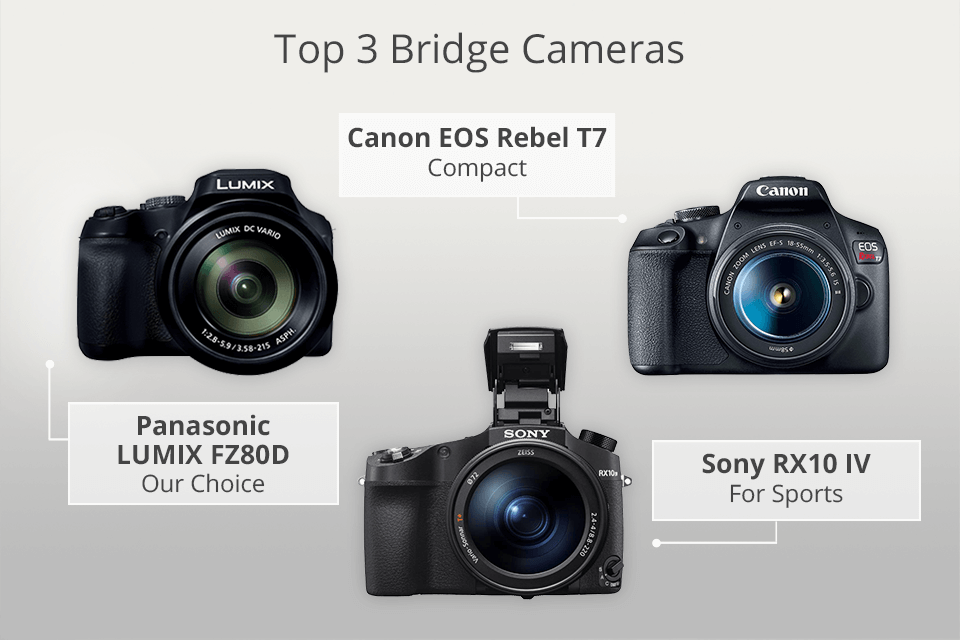
We tested popular models like the Nikon Coolpix P950, Panasonic Lumix FZ2500, Canon PowerShot SX70, Sony RX10 IV, Leica V-Lux 5, Nikon Coolpix B600, Fujifilm FinePix S9900W, Olympus Stylus SP-100, Nikon Coolpix P1000, Sony Cybershot H300, Fujifilm FinePix HS50 EXR, Olympus SZ-16 iHS, and others. Our goal was to evaluate essential features such as zoom range, sensor performance, autofocus, video quality, battery life, and overall ease of use - areas where bridge cameras excel in wildlife photography.
Some cameras didn’t meet my needs for various reasons. For example, Leica cameras are too pricey for me as a wildlife photography enthusiast, while the P1000 has a steep learning curve.
Our first step was assessing each camera's build and usability. We tested them both handheld in the field and mounted on a tripod for steadier shots. This helped us understand their portability, grip comfort, and button placement - key factors for long wildlife photography sessions.
Superzoom is the key feature of bridge cameras, so we focused on testing each model’s zoom range. We photographed distant wildlife, like birds and animals, to evaluate sharpness at different focal lengths. Next, we examined digital zoom to see how much it extended the reach and whether it still produced clear, usable images for wildlife photography.
We assessed autofocus by tracking moving subjects, such as flying birds and running deer, in different lighting conditions. To test burst shooting, we photographed fast-moving wildlife in quick bursts, evaluating each camera’s frame rate (fps) and its accuracy in maintaining focus throughout continuous shooting.
To evaluate image quality, we captured shots in both RAW and JPEG formats. We checked the sharpness, color accuracy, and how well the bridge camera preserved the detail under different lighting conditions, including sunrise, midday, and dusk. For cameras with RAW support, we also examined the extent to which shadows and highlights could be restored during post-production.
Because many wildlife photographers also capture video, we tested each camera’s 4K and Full HD recording capabilities. We filmed fast-moving animals to evaluate stabilization and the smoothness of autofocus adjustments during shooting sessions. Additionally, we shot in various lighting conditions to determine the bridge low light video cameras.
We tested battery life by using the cameras on long wildlife shoots, starting with a full charge and seeing how long they lasted. Then, we compared our results with the official CIPA rating to check if they matched expectations.